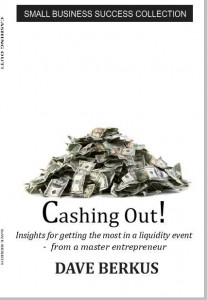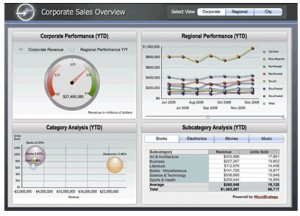Growing companies usually require more working capital during their periods of rapid growth. In past insights we have calculated the amount of additional capital needed for a business as it grows, and the additional capital required is often surprisingly large. In this insight, we need to speak of the sources of working capital and the implications to the future financial health of the choices made when selecting one financial resource.
Venture or angel-financed companies with plenty of working capital sometimes are immune to this need for some time into their growth, but at some point it will become clear that the cheapest form of finance is not equity in a growing enterprise. If the equity value of a company is growing at the same rate as the company, say 40% per year,  almost any form of debt financing may be preferable as a way of preventing further dilution from issuing additional equity.
almost any form of debt financing may be preferable as a way of preventing further dilution from issuing additional equity.
The problem is that few small, growing companies seem to be attractive to most banks for traditional unsecured or asset-backed loans. The exception is for those venture-backed companies with a significant cash balance remaining in the bank, which ironically make the most attractive customers for banks to offer loans. The banks want to maintain their venture relationships and of course, want to use the existing company cash in their bank as collateral for – you guessed it – their loans to the company. The term of art is “compensating balances,” and certainly using existing cash to leverage new loans makes the company more liquid, but at a price, as the compensating balances cannot be touched and are essentially frozen for the duration of the bank loan.
[Email readers, continue here…] There are asset-based lenders of every size willing to take more risk and finance the growth of young companies without requiring compensating balances. Using the company’s receivables and inventories as collateral, such lenders often also ask for a uniform commercial code (UCC) filing, perfecting their first interest in all of the remaining assets of the company – including intellectual property, the latter often being by far the most valuable asset the company has to protect.
Loan covenants are always required that clearly state how much net equity, the minimum current ratio, and other minimum financial requirements must be maintained to be compliant, and state the penalties for non-compliance – which are always severe, often threatening to call or cancel the loan in its entirety.
One of the important items in a calculation of amounts available to be borrowed is the amount of qualifying collateral, defined usually as the amount of net accounts receivable less than 60 days old, after deducting government billing – and all receivables from companies with some balances over 60 days. To this net number, the lender will then apply a percentage, from 50% to 80% as the amount available for borrowing under the agreement.
It is important to calculate the true cost of such money. It is typical to charge an interest rate that is higher than a normal bank loan for asset-based loans. Also tacked on is a “float period,” typically two to five days, amounting to additional interest as if the money paid back is still outstanding for that time as compensation for the time to clear checks paid into the lender either by your customers directly (lock box method) or by you. A five day float increases the actual interest rate by up to an additional 2% over the stated rate. Then there is the loan audit fee, often more than $4,000 a year, to pay for the lender’s auditor to make sure the collateral and company are compliant with the covenants of the loan. Lenders sometime add a charge for loan oversight, called a consulting fee, and very often make warrants (a promise to later sell the lender stock at a fixed price) a part of the deal. When calculating the true cost of a working capital loan, after adding all of these elements and estimating the value of the warrants in dilution to the shareholders, you may be shocked at the number when expressed as an annual percentage rate.
And yet, such a loan does rise and fall with need. And it is often cheaper than the cost in dilution of issuing additional stock to obtain working capital. These decisions require knowledge by management, help from accountants and or attorneys, and an understanding at the start of such a relationship that borrowing from asset-based lenders is like entering a marriage where the other partner has all the power to ensure success in the event that anything goes wrong with the original plans.
 Questions to be asked include: “What were the major factors contributing to the failure?” “How quickly did you and your team change the plan when faced with the first signs?” “Did you seek outside guidance?”
Questions to be asked include: “What were the major factors contributing to the failure?” “How quickly did you and your team change the plan when faced with the first signs?” “Did you seek outside guidance?”




